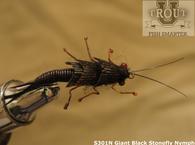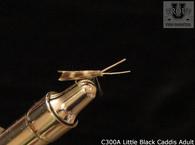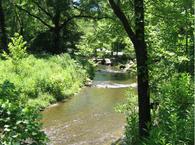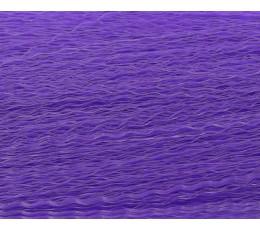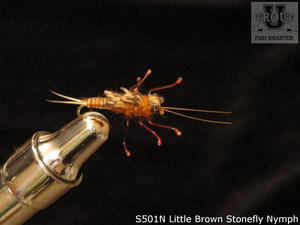
While at the recent fly fishing show in Charlotte, NC, I was able to attend a great class given by George Dainel, one of the world's best nymph fishers, entitled Dynamic Nymphing. George began fly fishing at the tender age of six and went on to become a National Fly Fishing Champion. His talk at the show was a great primer on the basics of nymph fishing, as George focused on efficiency and effectiveness. Here are a few of the tips George recommended for successful nymphing.
General
- It is not generally necessary to add weight to the leader; all the weight necessary can be integrated into the fly itself.
- The key, then, becomes getting and keeping the fly down to the bottom of the stream. Translation: eliminate any source of drag.
Casting
- Make short casts when possible, keeping as much (even all) of the line out of the water, to reduce drag. When longer casts are necessary, try to cast directly upstream. Making short casts and casting upstream will almost eliminate the need for mending. However, when it is necessary to mend, allow the line to slacken a little first, and then perform a "mini roll cast." Cast sharply downward, to get fly down in the water column faster. Position yourself properly to make the best cast. Don't be too afraid or lazy to get in the best position to cast, even using your weak hand.
Rig
- George uses a "dropper" technique, meaning his strike indicator is actually a dry fly, from which he has his nymph connected. The dry fly gives the fish a second opportunity to get hooked, while providing the strike indicator function for the nymph.
- When the nymph is near the bottom of the stream, it will be in slower moving water than the water at the surface. This will cause the dry fly to drift slightly more slowly than the current, giving you a visual clue that the nymph is near the bottom of the stream. George balances the weight of the nymph with the buoyancy of the dry fly, such that any little commotion around the nymph will cause the dry fly to submerge.
Leaders
- Use 9' - 10' leaders
- Have several leaders with different flies/configurations on hand. That is, instead of re-tying the rig when you want to make a change, have an entire, separate leader pre-rigged and on a separate spool. Add a portion of colored/highly visible leader material in the middle of the leader to allow you to sense strikes, even when you can't see the flies.
Fly Line
- Use floating fly line to create less drag.


